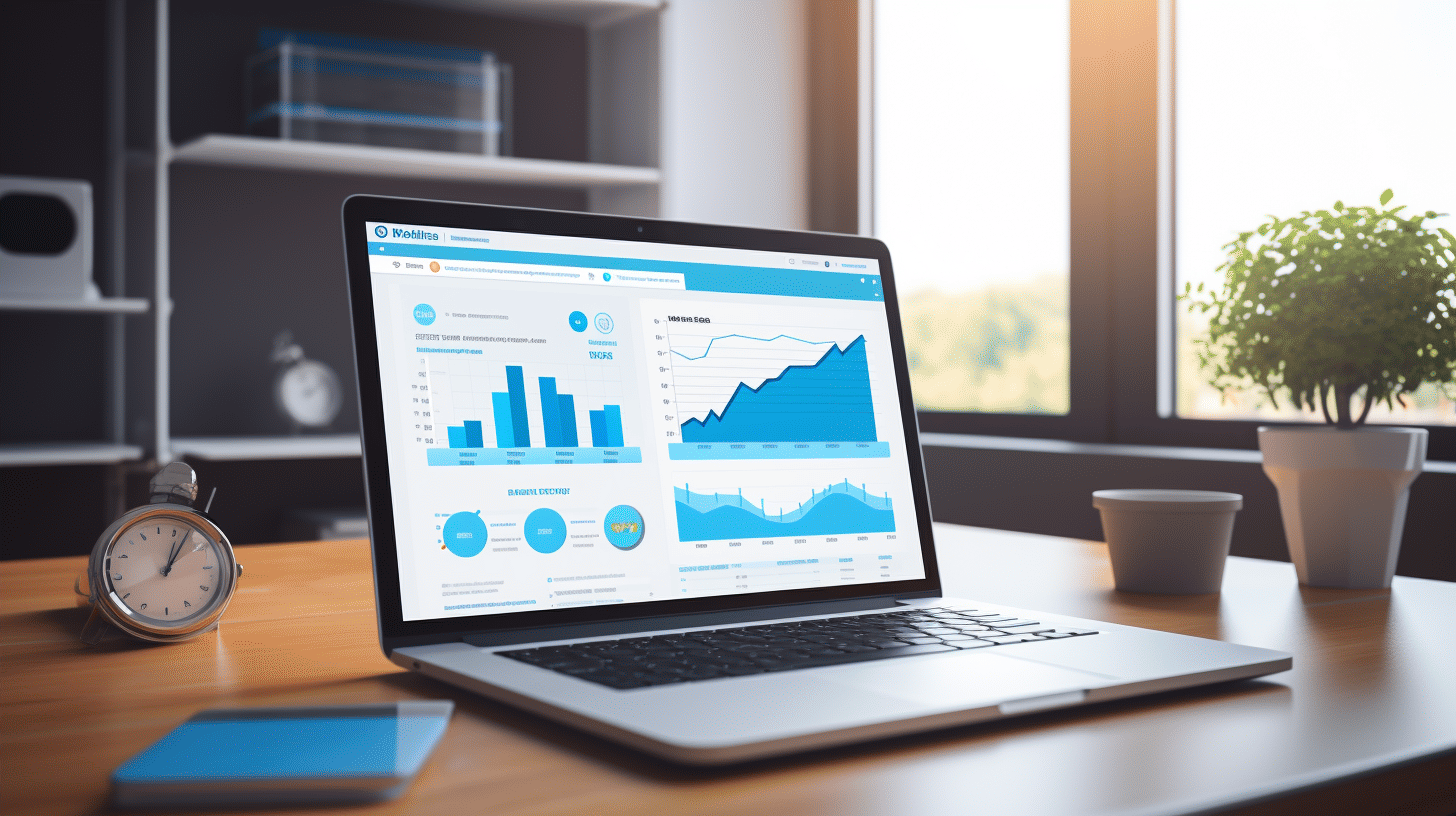In today’s fast-paced digital world, having a high-performing website is essential for the success of your online business. A slow and sluggish website can not only lead to a poor user experience but also result in lost customers and decreased sales. That’s why it’s crucial for WordPress online shop owners to prioritize website performance and optimize it to ensure seamless browsing and transactions for their customers.
When it comes to running an online shop on WordPress, performance optimization becomes even more critical. As an open-source platform, WordPress offers endless possibilities for customization and flexibility. However, it can also become a double-edged sword when it comes to website performance. With poorly optimized code, bulky themes, and excessive plugins, your online shop can suffer from slow loading times and a subpar user experience.
But fear not! In this article, we’ll dive deep into the world of website performance and explore strategies to improve it for your WordPress online shop. We’ll cover everything from the importance of website performance to practical optimization techniques and tools for monitoring performance. By the end of this article, you’ll be armed with the knowledge you need to boost your website’s performance and provide your customers with a seamless online shopping experience.
So, let’s get started on our journey to enhance the performance of your WordPress online shop and maximize its potential to attract and retain customers!
Understanding Website Performance
🚀 Welcome to the exciting world of website performance! In today’s digital landscape, where attention spans are short and competition is fierce, it’s crucial to ensure that your website is performing at its best. A slow-loading website can be a major turnoff for visitors, leading to lost sales and frustrated customers. On the other hand, a speedy and optimized website can attract and retain more customers, boost sales, and provide an overall positive user experience. Let’s dive into the importance of website performance and its impact on sales and customer retention.
Importance of Website Performance
⏱️ In a fast-paced digital era, speed is everything. Your website’s performance can make or break your online business. Here are a few reasons why website performance matters:
- User Experience: Visitors expect a seamless browsing experience, and a slow website can leave them feeling frustrated and impatient. A fast website offers a smooth and pleasant user experience, leading to higher engagement and increased conversions.
- Search Engine Optimization (SEO): In recent years, search engines like Google have started factoring in website performance as a ranking factor. A slow website can negatively impact your search engine rankings, making it harder for potential customers to find you online.
- Mobile Responsiveness: With the growing number of smartphone users, having a mobile-responsive website is crucial. Slow-loading websites on mobile devices can lead to high bounce rates and missed opportunities for engagement and sales.
Impact on Sales and Customer Retention
💰 When it comes to business, every second counts. Here’s how website performance affects your bottom line:
- Increased Sales: Studies have shown that faster websites have higher conversion rates. A one-second delay in page load time can lead to a significant drop in conversions. By optimizing your website’s performance, you can improve your chances of turning visitors into paying customers.
- Better User Engagement: A fast website encourages visitors to stay longer and explore your products or services. This increased engagement can lead to higher customer satisfaction and loyalty, translating into repeat purchases and positive word-of-mouth referrals.
- Reduced Abandonment: Slow-loading websites are notorious for high bounce rates and shopping cart abandonment. By providing a fast and seamless user experience, you can reduce abandonment rates and increase the likelihood of completing a purchase.
Current Challenges with WordPress Online Shop Performance
🛍️ If you’re running an online shop on WordPress, you may have encountered some performance challenges. Here are a few common issues faced by WordPress online shop owners:
- Page Load Times: Slow page load times can hinder your customers’ shopping experience and ultimately lead to lower sales.
- Plugin Overload: While plugins can add functionality to your website, using too many can significantly impact performance. Each plugin adds extra code and potential conflicts, which can slow down your website.
- Optimizing Images: Large image files can slow down your website significantly. Optimizing images by compressing them without sacrificing quality can help improve load times.
- Server Performance: A slow server can hinder your website’s performance. Choosing a reliable hosting provider with excellent server performance is essential for a smooth online shopping experience.
🔥 By understanding the importance of website performance, its impact on sales and customer retention, and the potential challenges faced by WordPress online shop owners, you can take proactive steps towards optimizing your website for success. Stay tuned as we explore the best practices and strategies to improve your website’s performance and deliver an exceptional user experience!
Performance Optimization Strategies
In today’s fast-paced digital world, website performance plays a crucial role in determining user experience and engagement. Slow-loading websites not only frustrate visitors but also have a negative impact on search engine rankings. To ensure that your website delivers a lightning-fast user experience, here are some performance optimization strategies to consider.
Optimizing WordPress Code
When it comes to optimizing your WordPress website, one of the first areas to focus on is the code itself. Bloated and inefficient code can significantly slow down your site’s performance. By following best practices and optimizing your code, you can improve your website’s speed and responsiveness. Here are a few tips:
- Minify CSS and JavaScript files to reduce their file size.
- Remove unnecessary white spaces, comments, and line breaks from your code.
- Use caching plugins to generate static HTML files and serve them to visitors, reducing the load on the server.
- Regularly update your WordPress version and plugins to benefit from performance enhancements and bug fixes.
Using Lightweight Themes and Plugins
The theme and plugins you choose for your WordPress site have a significant impact on its performance. Opting for lightweight and well-coded themes and plugins can ensure a faster browsing experience for your visitors. Here’s what you should consider:
- Choose a lightweight theme that doesn’t include unnecessary features or functionalities.
- Use plugins sparingly and make sure they are well-optimized for performance.
- Regularly evaluate your theme and plugin selection and remove any that are no longer needed.
Implementing Caching Mechanisms
Caching is a powerful technique that can dramatically improve website performance by temporarily storing static HTML versions of your web pages. When a visitor requests a page, the cached version is served instead of generating the page from scratch. This reduces server load and improves the website’s response time. Consider the following caching mechanisms:
- Enable browser caching to instruct visitors’ browsers to store certain elements of your site locally.
- Utilize server-side caching mechanisms like opcode caching or object caching to reduce the load on your server.
- Consider using a content delivery network (CDN) that caches and serves your static files from servers located closer to your visitors.
Leveraging Content Delivery Networks (CDNs)
A content delivery network (CDN) works by distributing your website’s static content, such as images, CSS, and JavaScript files, across multiple servers strategically located worldwide. When a visitor accesses your site, the content is served from the server closest to their geographic location, reducing latency and improving load times. Key benefits of using a CDN include:
- Faster page load times, especially for international visitors.
- Better scalability and handling of high traffic loads.
- Improved website security through built-in security features provided by many CDNs.
Image and Video Optimization
Images and videos play a crucial role in engaging website visitors, but they can also be a major contributor to slow load times. Optimizing these media files can significantly improve your website’s performance. Consider the following optimization techniques:
- Compress images to reduce file size without compromising quality. Tools like Smush can help with this process.
- Use next-generation image formats like WebP that offer better compression and quality.
- Lazy load images and videos, loading them only when they come into view, to reduce initial page load times.
Remember, optimizing website performance is an ongoing process. Regularly monitor your site’s speed and performance metrics, and make adjustments as needed to ensure a smooth and seamless user experience.
Monitoring Website Performance
Websites are the virtual storefronts of businesses, and ensuring their optimal performance is crucial for attracting and retaining customers. Monitoring website performance allows businesses to identify and resolve issues promptly, ensuring a seamless user experience. In this article, we will explore the importance of monitoring website performance and discover the key performance metrics to track, the tools available for monitoring, and how to interpret performance results.
Performance Metrics to Track
To accurately monitor website performance, it’s essential to track certain key metrics that provide insights into its speed, responsiveness, and overall user experience. Here are some important performance metrics to consider:
- Page Load Time: This metric measures the time it takes for a web page to fully load in a user’s browser. Slow page load times can lead to high bounce rates and frustrated users.
- Response Time: Response time refers to the time it takes for a server to respond to a user’s request. Slow response times can indicate server issues or network problems.
- Website Availability: It’s crucial to monitor the availability of your website to ensure it is accessible to users at all times. Downtime can result in lost revenue and damage to your brand reputation.
- Conversion Rates: Conversion rates are an essential metric for tracking the effectiveness of your website in achieving its goals, such as sales, lead generation, or newsletter sign-ups.
- Mobile Performance: With the increasing use of mobile devices, it’s crucial to monitor how well your website performs on different mobile platforms. Mobile-friendly websites are more likely to engage and retain users.
Tools for Monitoring Performance
Monitoring website performance can be made easier with the help of various tools designed specifically for this purpose. Here are some popular performance monitoring tools:
- Google Analytics: Google Analytics is a comprehensive web analytics tool that provides valuable insights into website performance, including page load times, traffic sources, and user behavior.
- Pingdom: Pingdom is a powerful monitoring tool that offers real-time monitoring of your website’s uptime and performance. It sends alerts when issues are detected, allowing you to address them promptly.
- GTmetrix: GTmetrix analyzes your website’s performance and provides detailed reports on page load times, performance scores, and recommendations for optimization.
- New Relic: New Relic is a monitoring tool that offers comprehensive performance insights, including server response times, database performance, and application performance.
Interpreting Performance Results
Once you have collected performance data, it’s crucial to interpret the results to identify areas that need improvement. Here are some tips for interpreting performance results effectively:
- Benchmark Against Industry Standards: Compare your website’s performance metrics with industry benchmarks to get a better understanding of how well it stands in terms of speed and user experience.
- Identify Performance Bottlenecks: Look for performance bottlenecks that may be slowing down your website. This could include large image sizes, excessive server requests, or inefficient coding.
- Prioritize and Optimize: Focus on optimizing the areas that have the most significant impact on user experience, such as reducing page load times or improving mobile performance.
- Monitor Regularly: Website performance is not a one-time fix. Regularly monitor your website’s performance to catch any issues early on and continuously optimize for better results.
Remember, monitoring website performance is an ongoing process that requires regular assessment and improvement. By tracking key performance metrics, utilizing the right tools, and interpreting the results effectively, businesses can ensure their websites provide a seamless user experience and maintain a competitive edge in the digital landscape. 🚀
Planning for Continuous Performance Improvements
In today’s fast-paced and competitive business world, organizations are constantly seeking ways to improve their performance and stay ahead of the game. One crucial aspect of achieving continuous improvement is effective planning. By setting clear performance goals and utilizing proven improvement methodologies, businesses can enhance their performance and drive long-term success.
Setting and Reviewing Performance Goals
Setting performance goals is the first step in any successful improvement plan. These goals serve as a roadmap, providing direction and focus for the entire organization. Here are some key points to keep in mind when setting and reviewing performance goals:
- Align goals with the organization’s strategic objectives: Performance goals should be in line with the overall strategic direction of the company. This ensures that everyone is working towards the same vision and that efforts are concentrated on the right areas.
- Make goals specific and measurable: Vague or general goals are difficult to track and evaluate. It’s essential to define goals that are specific, measurable, achievable, relevant, and time-bound (SMART). This enables objective assessment and allows for tracking progress over time.
- Regularly review and adjust goals: Continuous improvement requires an agile approach. Goals should not be set in stone; they should be reviewed regularly and adjusted as needed. This allows for flexibility and adaptation to changing circumstances.
- Seek input from employees: Employees are on the front lines and often have valuable insights into areas that can be improved. Involving them in the goal-setting process not only increases their engagement but also ensures that goals are realistic and attainable.
Performance Improvement Methodologies
Once performance goals have been set, organizations can turn to various improvement methodologies to drive progress. Here are a few examples of popular methodologies:
- Plan-Do-Check-Act (PDCA): Also known as the Deming Cycle, PDCA is a systematic approach that involves four stages – planning, executing, reviewing, and taking action. This iterative process allows organizations to continuously assess their performance, identify areas for improvement, and implement necessary changes.
- Lean Six Sigma: Lean Six Sigma combines two powerful methodologies – Lean and Six Sigma – to achieve process efficiency and quality improvement. Lean focuses on eliminating waste and optimizing workflow, while Six Sigma aims to minimize defects and variations in processes.
- Total Quality Management (TQM): TQM is a comprehensive approach that emphasizes a customer-centric mindset and continuous improvement at all levels of the organization. It involves processes such as quality control, employee involvement, and continuous training.
- Kaizen: Kaizen, which means “change for the better” in Japanese, is a philosophy of continuous improvement. It encourages small, incremental changes in processes and systems, driven by the collective efforts of all employees.
By implementing these methodologies or a combination thereof, organizations can create a culture of continuous improvement and ensure that performance goals are achieved.
In conclusion, effective planning and the use of proven improvement methodologies are essential for driving continuous performance improvements. By setting clear and measurable goals, regularly reviewing progress, and utilizing relevant methodologies, organizations can optimize their performance and stay ahead in today’s competitive landscape. So, let’s start planning for continuous improvement and take our organizations to new heights!
Conclusion
In conclusion, optimizing website performance is crucial for the success of your WordPress online shop. By improving loading speeds, reducing bounce rates, and enhancing the overall user experience, you can boost sales, increase customer retention, and ultimately grow your business.
Throughout this article, we have explored various strategies for improving website performance, including optimizing WordPress code, using lightweight themes and plugins, implementing caching mechanisms, leveraging Content Delivery Networks (CDNs), and optimizing images and videos.
Monitoring performance using relevant metrics and tools is also essential to track progress and identify areas for improvement. By setting and reviewing performance goals, you can create a roadmap for continuous enhancements and ensure that your website remains fast and reliable.
At Managed-WP, we understand the importance of website performance and offer a premium managed WordPress cloud hosting platform. With our expertise and 24/7/365 support, we can help simplify your infrastructure, provide the freedom to create exceptional digital experiences, and solve any problems you may encounter along the way.
Investing in reliable hosting is a key component of improving website performance, and Managed-WP is here to support you every step of the way. Visit our website at managed-wp.com to learn more about our services and how we can help you optimize your WordPress online shop.
Frequently Asked Questions
- Why is website performance important for an online shop?
Website performance is crucial for an online shop as it directly impacts user experience, conversions, and search engine rankings. A fast-loading website ensures that visitors stay engaged, increasing the chances of making a purchase and improving overall sales.
- What are some tips to improve website performance for a WordPress online shop?
To improve website performance for a WordPress online shop, you can: 1. Optimize images and use a CDN, 2. Minify and combine CSS and JS files, 3. Enable caching, 4. Use a lightweight WordPress theme, and 5. Regularly update plugins and WordPress core.
- How can optimizing images and using a CDN improve website performance?
Optimizing images by compressing them and using the appropriate file format reduces the file size, leading to faster load times. Using a Content Delivery Network (CDN) helps distribute website data across multiple servers globally, minimizing latency and improving loading speed.
- What is caching and why is it important for website performance?
Caching involves storing static versions of your website’s pages or elements, which can be quickly served to visitors without the need for generating them dynamically. Caching reduces server load and improves website speed, resulting in a better user experience.
- Should I use a lightweight WordPress theme for my online shop?
Yes, using a lightweight WordPress theme is recommended for an online shop as it reduces unnecessary code and functionalities, resulting in a faster website. Additionally, a lightweight theme often has better compatibility with plugins and offers a more streamlined user experience.



















